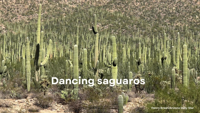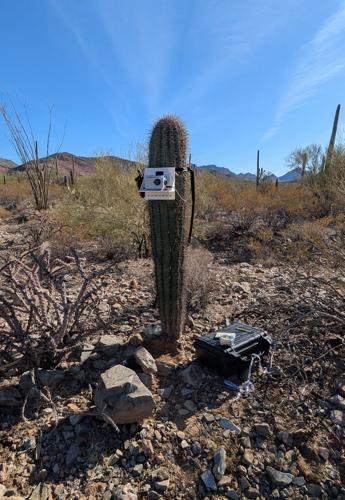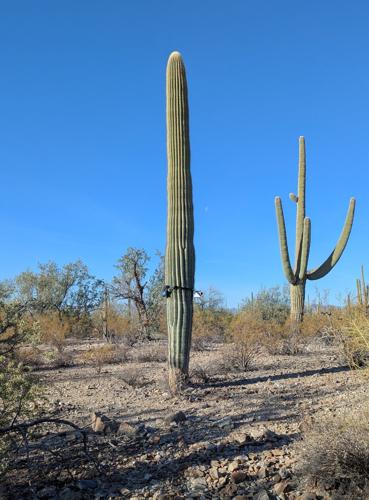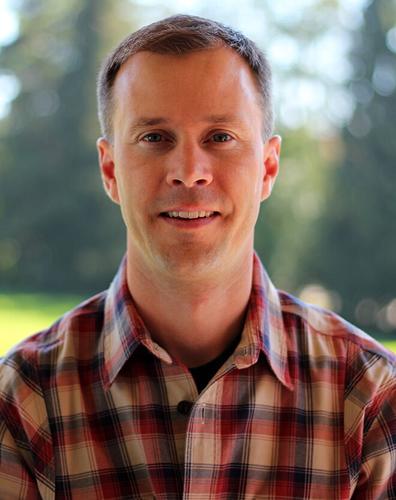Saguaros never stop swaying to the rhythm of the Sonoran Desert.
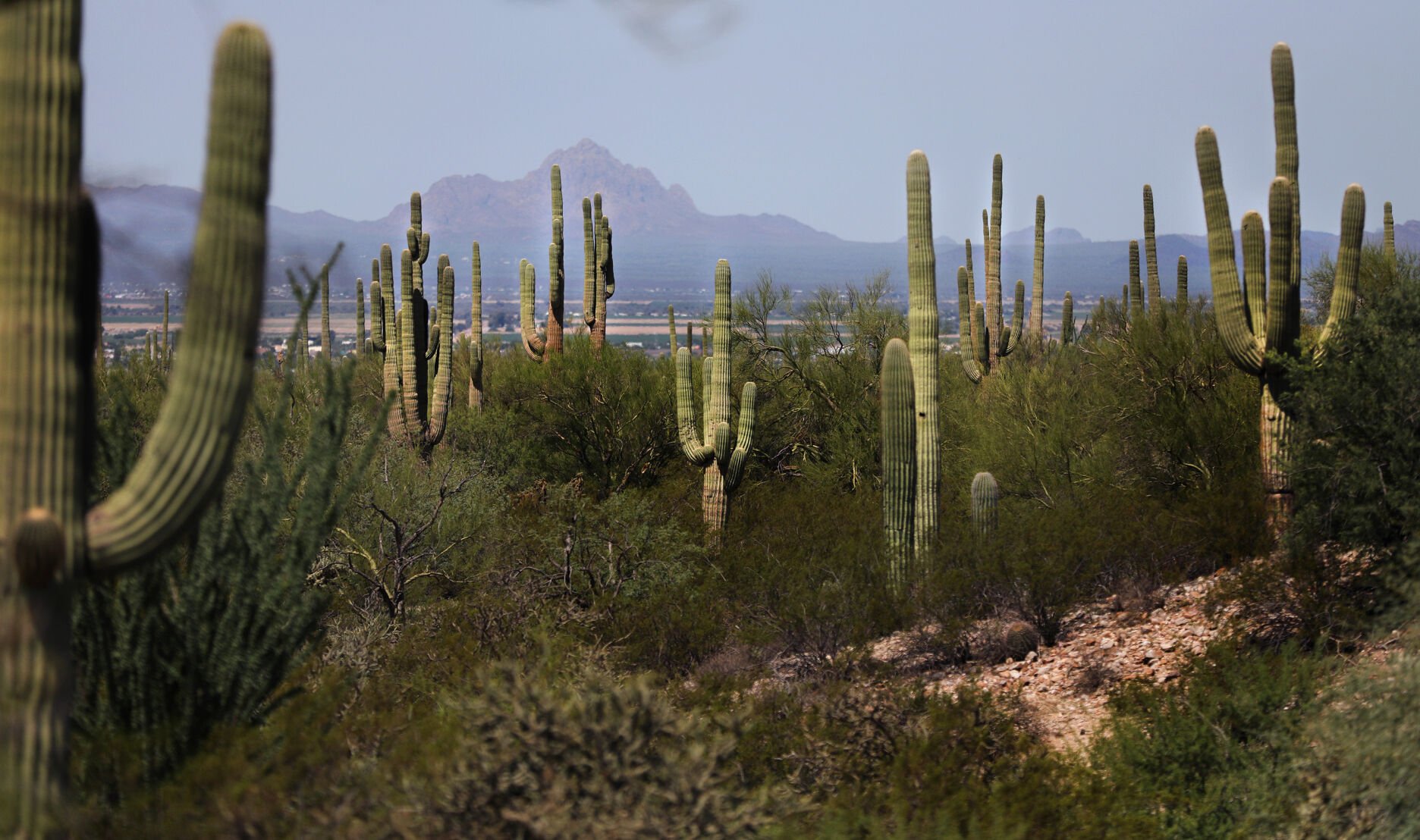
A geologist from the University of Utah is using a seismometer to study the subtle movements of saguaros like these at the Tortolita Preserve.
A new study by a researcher at the University of Utah shows the cactuses are in constant motion, whether the wind is blowing or not, and their subtle dance offers clues about their internal architecture.
strapped a seismometer to 11 saguaros of varying heights at Tucson Mountain Park to produce what he called a ÔÇ£structural characterizationÔÇØ of each cactus by measuring its ambient vibrations. In the process, he may have pioneered a new way to study the biomechanical properties of the plants without damaging them.
ÔÇ£These cacti are vibrating every second of every day. Whether we can see it or not, theyÔÇÖre always moving,ÔÇØ he said. ÔÇ£They donÔÇÖt have to move a lot. These seismic sensors are incredibly sensitive.ÔÇØ
People are also reading…
For the past decade or so, Moore has been using similar seismic techniques to assess the structural integrity of UtahÔÇÖs famed rock bridges, arches and towers. He said he got the idea to try it out on saguaros while visiting family in Tucson.
Moore figured the cactuses would behave like any other cantilever, the architectural term for a structural element that is only fixed in place at one end.

A seismometer collects ambiant vibration data from a saguaro in Tucson Mountain Park as part of a study by University of Utah researcher and Tucson native Jeff Moore.
ÔÇ£I was expecting a rather boring data set that adhered closely to analytical predictions,ÔÇØ he said.
Instead, the vibrations he measured revealed surprising frequency fluctuations stemming from the structural properties of the saguaro and other factors.
ÔÇ£With 15 minutes of data, I can describe the change in flexural properties of the cactus from top to bottom and amongst populations,ÔÇØ Moore said. ÔÇ£ThatÔÇÖs what I think is really cool. The data generated to understand the structural properties of the cactus come from a very short time period.ÔÇØ
His findings were published on Oct. 21 in .
Under their sway
In the past, he said, the only way to gauge the stiffness and flexibility of a saguaro was to cut off sections of it and physically bend them using weights to measure those properties. ÔÇ£Obviously, thatÔÇÖs something that can only be done very rarely,ÔÇØ Moore said. ÔÇ£If we wanted to do something more broadly and without injuring the cactus, then this is where I think these ambient vibration measurements can come in.ÔÇØ
The study represents a homecoming of sorts for the researcher.
Moore grew up in Tucson, where he spent his childhood picking through the ribs of fallen saguaros and studying the giant cactuses while waiting for the school bus. ÔÇ£TheyÔÇÖve always been in my life and always been around in various ways,ÔÇØ he said. ÔÇ£IÔÇÖve grown up around them.ÔÇØ

Moore
Moore was part of the first graduating class at Catalina Foothills High School in 1996, then earned his bachelorÔÇÖs degree in geological engineering from the University of Arizona in 2000 before leaving to attend graduate school at the University of California, Berkeley. He is in his 13th year at the University of Utah, where he specializes in geohazard assessment.
Moore said he conducted his saguaro study with permission from Pima County in a part of not far from the Arizona-Sonora Desert Museum.
He said he chose an area away from any roads or hiking trails to limit outside vibrations and unwanted attention. He only collected data from single-stemmed saguaros because the presence of arms would have complicated the measurements.
Seismometer technology has advanced greatly in recent years, with small, high-quality instruments now readily available and affordable for professionals and amateur scientists alike. Moore said the device he used came from a Panama-based company called , which makes a seismometer light enough that it can be ÔÇ£attached on the outside of a saguaro stem without causing any damage.ÔÇØ
He would mount it directly to the cactus using a nylon strap and a special 3D-printed bracket, then come back after 15 minutes to collect the instrument.

University of Utah geologist Jeff Moore placed seismometers on 11 single-stemmed saguaros of various sizes in Tucson Mountain Park as part of his study.
His test subjects ranged in size from about two feet to almost 25 feet tall. It didnÔÇÖt matter where on the stem the device was placed, so he would attach it where it was easiest to reach.
The specific rates at which the cactuses swayed ÔÇö also known as their natural resonance frequencies ÔÇö varied based on their relative height, stiffness, flexibility and other factors, such as time of day and water content.
ÔÇ£Overnight it sort of sways at a faster frequency, and as the day warms, the frequency drops,ÔÇØ Moore said.
Some of the results were confounding at first, until he remembered his childhood lessons in saguaro anatomy. Shorter cactuses tend to have ribs that are more uniform in thickness, while the ÔÇ£bonesÔÇØ of taller specimens get thinner in diameter near the tips of the stems. ÔÇ£This manifested in the data,ÔÇØ Moore said.
Growth potential
With additional study, he believes ambient vibration measurements could be used to assess the structural health of saguaros and study their tolerance to everything from extended drought to major wind events ÔÇö all without harming the cactus.
He also thinks the technique might provide a way to track how much water the plants take up after a rain event, though his own experiments in that regard proved inconclusive.
Tucson ecologist Bill Peachey has spent decades studying saguaros, including the roughly 130 of them heÔÇÖs been keeping tabs on near Colossal Cave since 1997. He said heÔÇÖs probably poked around in more cactus guts than just about any researcher on Earth, so he applauds MooreÔÇÖs effort to find new, noninvasive ways to study the plants.
ÔÇ£ItÔÇÖs very admirable,ÔÇØ Peachey said. ÔÇ£This guy really put a lot of thought into this. What it shows is you can make really sensitive measurements.ÔÇØ
Even so, Peachey questions how useful such seismic data can really be, even when it comes to some of the things Moore has suggested.
But just because he canÔÇÖt think of a practical application for the measurements doesnÔÇÖt mean there isnÔÇÖt one. Simply trying something new like this can lead to more discoveries down the line, Peachey said. ÔÇ£If nothing else, this could give people the idea that maybe they should try something new, too.ÔÇØ
Moore said he hopes to see other researchers build on his work.
ÔÇ£ItÔÇÖs my hope that it sort of unlocks a new measurement for the botanistÔÇÖs toolbox,ÔÇØ he said. ÔÇ£IÔÇÖm hoping that other folks will run with it a little bit and see where it goes.ÔÇØ


